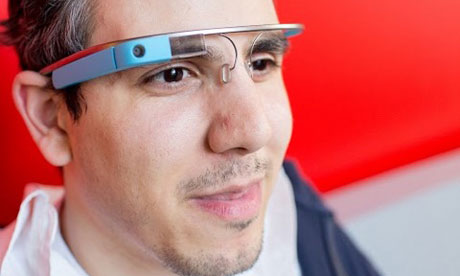Much about Google's wearable computing project has come from people who haven't used it. We spoke to one person who has – and who wrote an app for taking pictures by winking

Mike DiGiovanni, emerging technology leader at Isobar, and author of the Winky app, wearing his Google Glass as part of the Explorer project.
The hype and noise around Google Glass has been colossal – triggering discussions about privacy, the limits of wearable computing, and social interaction in a world where the internet is available just an eye-glance away.
But what's it like to use Google Glass? I spoke to Michael DiGiovanni, an emerging technology leader at Isobar, a global digital marketing company – and who earlier this month released Winky, which is "Glassware" (an app for Glass) that lets you take a picture by winking.
DiGiovanni has quite a history in apps. As an Android developer for Barnes & Noble.com, he was instrumental in the creation of the Nook app for Android devices and contributed to the reading experience of the Nook Color device.
As an independent mobile developer, he has brought apps through the entire development process from conception to release. His self-published software on the Android market totals over 300,000 downloads and none has less than four stars.
How long have you been using Google Glass, and what are your first impressions?
But what's it like to use Google Glass? I spoke to Michael DiGiovanni, an emerging technology leader at Isobar, a global digital marketing company – and who earlier this month released Winky, which is "Glassware" (an app for Glass) that lets you take a picture by winking.
DiGiovanni has quite a history in apps. As an Android developer for Barnes & Noble.com, he was instrumental in the creation of the Nook app for Android devices and contributed to the reading experience of the Nook Color device.
As an independent mobile developer, he has brought apps through the entire development process from conception to release. His self-published software on the Android market totals over 300,000 downloads and none has less than four stars.
How long have you been using Google Glass, and what are your first impressions?
DiGiovanni: Two weeks ago I got to pick them up – and I've been using them non-stop. It takes a while to get used to them. But I've been wearing them while driving, walking, essentially all the time. It's quite similar to wearing glasses – I don't normally – but without something sitting in front of your eyeballs.
The display is just outside your normal range of vision, so that you have to roll your eyes upwards – it sits on the top right. I turned it on by nods. You can still wear them while driving and know that you are not going to be interrupted by something popping up in your view.
The software experience is primarily voice activated. You say "OK Glass" and then "take a picture", or "Google something" or "give me directions to somewhere".
You can ask it maths questions, you know like "what is two plus two" as you can in Google, as well. As you take pictures, and emails and text messages come in, they go into your timeline which is shown in the display. If you're driving or going somewhere, you get a Google Map with directions. It's much better than having a sat nav – much less distracting, because you're not really taking your attention down off the road – you still have your head up, though you do look up to the right.
You enhance the experience with apps, called Glassware – think of them as micro-web pages. There's some HTML that can be pushed in there. So I got the New York Times headlines pushed there into my timeline. But they don't take priority over other things. More
No comments:
Post a Comment